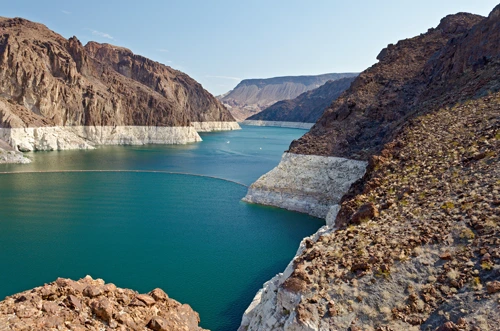
For almost 20 years, Arizona has been preparing for a shortage on the Colorado River through the Arizona Water Banking Authority (AWBA). As I see it, the Legislature created the AWBA in 1996 for two primary purposes. The first was to put our Colorado River allocation, particularly that portion delivered through the Central Arizona Project (CAP), to full use. The second purpose was, given CAP’s low priority in times of shortage, to store water for the future time when a Colorado River shortage would prevent delivery of subcontract water. This latter purpose had several elements to it, namely firming up or making deliveries more reliable for municipal & industrial uses, Indian water, and some on-river communities in times of shortage. The AWBA was also authorized to perform interstate water banking, which it has, pursuant to agreement with Nevada, and store for water management purposes.
The AWBA, one of the best-kept secrets of Arizona government, has been working diligently. About 3.2 million acre feet (MAF) of Colorado River water have been stored for intrastate purposes, with another 700,000 acre feet stored on behalf of Nevada. The history and activities of the AWBA are well documented on the agency’s web site, azwaterbank.gov.
Despite more than a decade of drought in the Colorado River watershed, a Colorado River shortage has yet to be declared. Water stored in Lakes Mead and Powell and one very wet winter a few years ago have postponed a declaration. While researchers have been offering probabilities of shortage for some time, the Bureau of Reclamation’s December 2012 Colorado River Basin Water Supply and Demand Study provides a clear reminder that Colorado River flows are expected to be variable. The future gap between water demand and supply was projected for the basin for several scenarios based on data provided by the seven basin states. Arizona’s imbalance in demand and supply has itself been documented in the 2011 report of the Arizona Water Resources Development Commission (WRDC) and is projected to reach 1 MAF by 2060.
While Reclamation’s Basin Study may have been referred to as a “call to action”, a report on Colorado River operations released by Reclamation on August 16, 2013 has been termed a “wake-up call”. Based on the methodology agreed to by the seven basin states and adopted by the U.S. Secretary of the Interior, releases from Lake Powell into Lake Mead in 2014 are projected to be 750,000 acre feet less than in 2013 and the lowest release since Lake Powell was filled. This means that we are more likely to reach the trigger point for a shortage declaration, which is a Lake Mead elevation of 1,075 feet. In fact, the report projects a two percent probability of shortage declaration in 2015, and a 50 percent chance in 2016.
What would a shortage declaration in 2016 mean for Arizona cities and towns relying on Colorado River water? Actually, the water supplies for the cities and towns would not be affected by a shortage of the magnitude envisioned. Those impacted would be farmers and users of what is termed excess CAP water – water under contract to some entity but not actually ordered in a given year. It has been the existence of excess CAP water that has allowed the AWBA to store the water stored to date.
Though the AWBA has stored a significant amount of water for authorized purposes, its activities are not meant to address imbalances between supply and demand identified by the WRDC. Additional strategies are needed. One approach that should be high on our list is matching water quality with the intended use. Why should we be using potable quality water for outdoor uses when lesser quality water can do? Many communities already match quality with use to some extent by reusing effluent for outdoor irrigation. Individual property owner use of harvested rainwater and grey water is another way of reducing demands on potable water supplies.
A more radical change in water utilization would be reuse of highly treated effluent for meeting potable water demands. The investigation and implementation of this once-shunned option is noteworthy. Not only are communities considering indirect potable reuse, where the highly treated wastewater is blended with other waters through groundwater recharge or mixing with surface water, but direct potable reuse is subject to more active discussion. The WRDC report projected the availability in the year 2100 of between .7 and 1.3 MAF of additional reclaimed water.
But has the public gotten over the “yuck factor”? Will Orange County soon be joined by San Diego and El Paso? What about communities in Arizona? We may be observing changes in thinking as we experience extended drought and better understand wastewater treatment technologies. The National Research Council highlighted potable reuse as one of the many options considered in its 2012 report, Water Reuse: Potential for Expanding the Nation’s Water Supply through Reuse of Municipal Wastewater.
During my annual summer get-away to San Diego, I visited the San Diego Water Purification Demonstration Project. The city whose citizens rejected a “toilet to tap” proposal in the late 1990s has a pilot project that is treating wastewater to very high standards using reverse osmosis and ultra violet/advanced oxidation. This extremely high quality water is being mixed with surface water – of lesser quality actually – in a reservoir and then put through a conventional surface water treatment plant for eventual delivery to customers. The pilot plant was designed for public accessibility; people can easily sign up for a tour. An Independent Advisory Panel has had a key role in this effort.
San Diego’s approach should be watched carefully by others, including Arizona communities. It is important to keep our minds open to the full range of water management and utilization options as we consider strategies for meeting future water demands.

